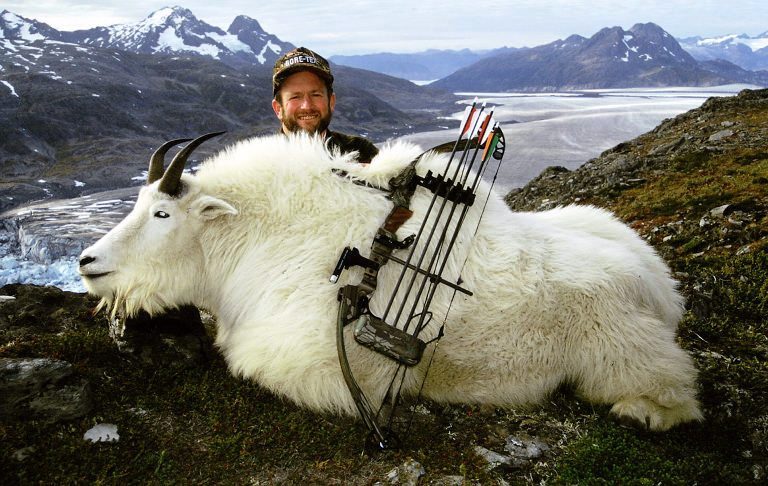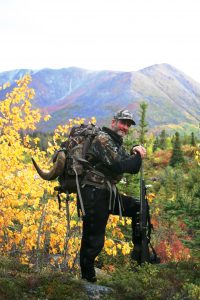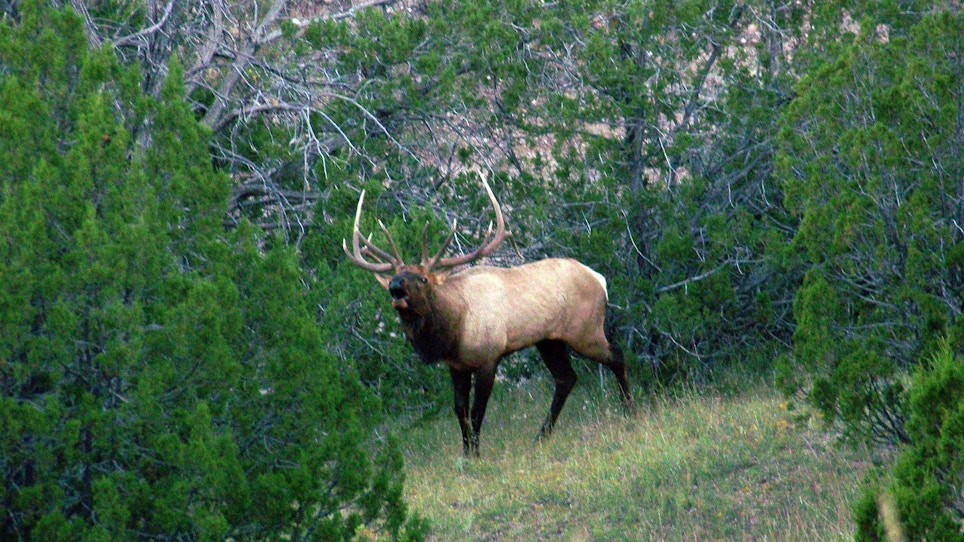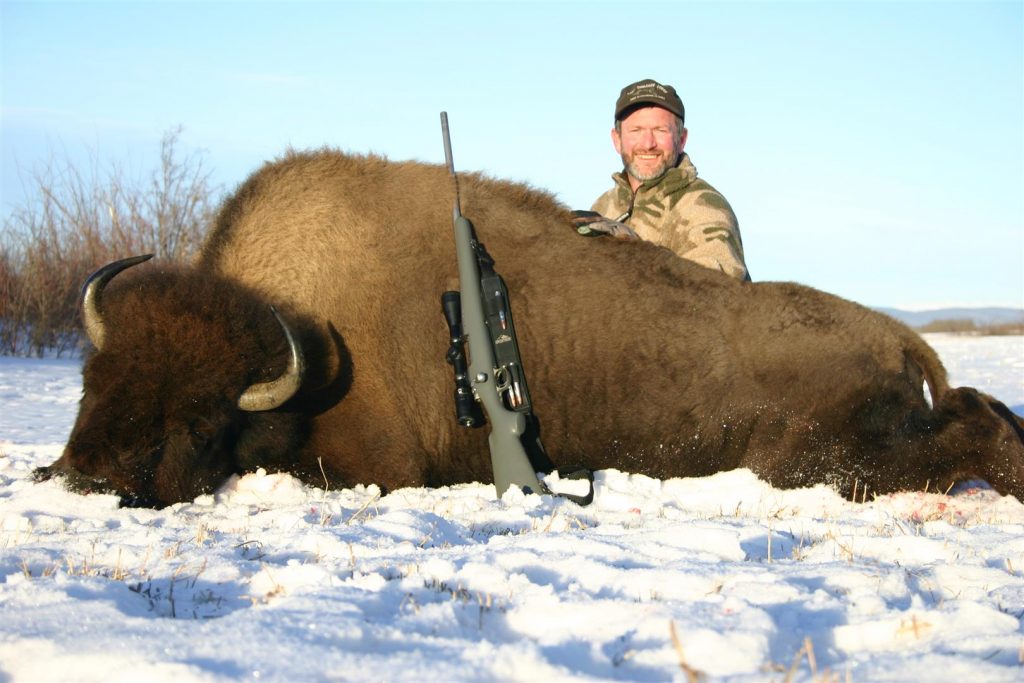 Standing halfway up a steep, barren, winter-yellow slope in the Owyhee Mountains of southern Idaho I asked myself an obvious question — was this grueling hunt worthwhile?
Standing halfway up a steep, barren, winter-yellow slope in the Owyhee Mountains of southern Idaho I asked myself an obvious question — was this grueling hunt worthwhile?
I was chasing chukar (quite literally chasing them — I would see them high on a ridge, move after them and find that they had suddenly gained even higher ground). These were the same birds I could kill on any number of game preserves in the eastern U.S. without nearly as much effort as I was expending to shoot a wild one. But killing chukars wasn’t the sole purpose of this hunt, and thank goodness it wasn’t because I never did catch them. Instead, it was the challenge of hunting them in the wild.
For many hunters, myself included, the most desirable hunts are those that demand the most from us. We like to be tested, like to be challenged physically and mentally. Failure is a relative term on these hunts — I succeeded in the Owyhees not because I killed a chukar, but because the chukar hunt didn’t kill me.
Up to the Challenge
So it goes with many other North American hunts, these aren’t trips for everyone. And as easy as it is to become enthralled by the notion of climbing over boulders and facing bitter mountain winds, the reality is that these hunts are enough to reduce even someone of reasonable fitness into a weak-kneed, broken-hearted puddle.
And don’t think it’s all about big game, either; my vote for the toughest, most demanding hunt in North America will take you in search of an Asian bird that’s only slightly larger than a chicken.
That’s not to say that whitetails, turkeys and coyotes aren’t hard to hunt. In fact, you’d be hard-pressed to find three more wary species anywhere on the planet. It’s only that hunting them doesn’t always require deep treks into remote and rugged country.
But if leg-burning hikes in rugged and remote country is your thing, these 10 hunts might be just what you’re after.
1. Mountain Goat
It’s been said that sheep country ends where mountain goat country begins. In many cases, that’s true. If you want a goat, you’ll have to follow them wherever they go and that usually means steep country at high elevations.
Nimble and superbly adapted to the vertical terrain they call home, goats will require you to pick your way through some really rough stuff just to get into their neighborhood. At these high elevations weather is often a factor, and that means you might be camped out in a dome tent on a bed of rocks for a day or more waiting for harsh weather to pass.
Goats tend to stand out on gray rock faces, but when a blanket of snow covers their mountain haunts, finding them gets exponentially tougher. These sturdy animals are also notoriously tough. If you don’t make a good first shot with a magnum cartridge, you can plan on a nasty tracking job in sheer mountains. Pack only what you absolutely need for this hunt; you’ll feel every ounce of weight in the pack by the time you reach goat country.

Finding a mountain goat is hard enough, but even if you take a shot at one, they're so incredibly tough.
2. Coues Deer
If big antlers flip your switch then the Coues deer of the desert southwest probably won’t appeal to you. Resembling a slight, gray whitetail, bucks rarely grow more than 130 inches of antler. But the real draw to hunting Coues deer is the challenge of pursuing them in the rough country where they thrive.
All whitetail are adept at disappearing into cover, but the delicate Coues deer is a master at using the scant thorn and cactus vegetation in their desert homes to stay hidden. If you get a shot in these wild and rugged canyons, there’s a good chance it will be far and you’ll have to act quickly.
These slight gray shadows don’t offer a large target and won’t give you much time for a shot, especially since they are primarily on the move in the dim light of dawn and dusk. But a good Coues buck is a fantastic trophy simply because there’s no easy way to get one. Plus, the meat is excellent.
3. Mountain Lion with Hounds
There’s a notion shared by many — including some hunters — that pursuing game with hounds is easy. Rest assured the people perpetuating this rumor have never hunted with hounds. When these agile dogs — blueticks, redbones, black-and-tans, Plotts, Walkers or English — strike a hot track, they’ll follow it wherever it leads, which is usually into the most God-awful, remote wilderness around.
And if you want your trophy, that means you have to follow these dogs wherever they go. Hunting both bears or mountain lions with dogs is tough, but since lion hunting means breaking through snow while climbing, it’s oftentimes the tougher of the two.
Once you’re at the tree, harvesting the cat isn’t hard. But that’s a bit of a misnomer since the walk to the baying hounds might be the toughest climb of your entire life. And, if the cat is small or decides to jump and run, congratulations, you get to start all over.
Many people say that mountain-lion meat isn’t good. That’s nonsense. In fact, it was considered a delicacy by early settlers, and the light meat has a flavor like pork.
4. Chukar
These birds were imported from the desert mountains of Asia, and they have adapted well to the equally rough mountain habitat in the United States. Named for their distinct call (which echoes down the mountains like a taunt from an opposing athletic team when you hunt them), chukars are capable of running for cover or flying as needed.
Coveys hide near the steep stone cliffs of desert mountains and, when flushed, dive straight downhill, buzzing along with the contours of the land. In case you’ve never tried to shoot a bird zig-zagging downhill and away from your gun at a high rate of speed, let me assure you that it’s extremely difficult.
If you’re hunting on foot, it’s best to get above the birds and work down. Chasing a covey uphill is largely a waste of time. Sentry birds will keep the covey alert to your presence and they’ll always remain just ahead of you — and just out of range.
I hunt chukar with Tom Loy of Tallgrass Gordon Setters and his dogs are long and lean, a product of the exercise regimen these dogs are exposed to on daily basis. Lesser dogs simply can’t handle the heat and rocky terrain. If you have a dog, introduce them to chukar gradually and keep water on hand. You’ll need plenty of hydration yourself, too. If you manage to down a few birds, chukar are among the most delicious of all wild birds.

The appeal to hunting wild sheep is the personal challenge that requires a hunter to dedicate time, effort and resources.
5. Wild Sheep
Sheep hunts are tough in a variety of ways. It’s tough to draw a tag, tough to get into sheep country and tough to locate a good ram and get in range. But that’s the appeal of sheep hunting — it’s a personal challenge that requires a hunter to dedicate time, effort and resources.
If you are lucky enough to draw a tag and want to hunt your sheep without a guide, you’ll need to spend plenty of time in the high country and that means lots of climbing and hiking. If you hire a guide, you’ll need to make certain you are in sheep shape when the hunt commences. Just one day crossing shale slides and climbing steep inclines will leave your legs burning, quickly turning your dream trip into a painful nightmare. But there’s no place else like sheep country, and breathing in the thin air while you glass barren hillsides for big rams is well worth the effort.
6. Wilderness Elk
Everyone, it seems, wants to hunt elk in the wilderness. The idea of pulling yourself into the saddle and riding out with a string of stock into wild country is certainly romantic, but there are a number of hunters every year who find out rather quickly that they’ve bitten off more than they can chew.
These wilderness hunts mean long rides into and out of camp (been on a horse lately?), long hours of glassing in wind and rain and hot sunlight, and coming home to relatively Spartan accommodations each night.
If you are fortunate enough to get an elk, you need to be able to field dress the animal and care for the meat. This will likely require hiking quarters back to camp. Oh, and you need to be sure to hang that meat high enough and far enough away from camp that a roving grizzly or black bear with a taste for red meat doesn’t crash your party.
7. Aoudad
Introduced to the desert southwest from the Barbary Coast of Africa in the years following World War II, aoudad are stocky, dusty-brown sheep with flowing manes of blonde hair on their chest and heavy, crescent-shaped horns.
Since they are an exotic (and are being eradicated in some areas to make room for desert bighorns), free-range aoudad are relatively cheap to hunt. But that doesn’t mean they’re easy to pursue. Many hunters consider chasing them in the rugged mountains along the Mexican border to be one of the toughest hunts in North America, on par with sheep and goat hunts farther north.
There are no tags to apply for (in most cases) and you can be in aoudad country from anywhere in the Lower 48 States in just a few hours. Seasons generally run year-round, but the summer months are so unbearably hot that very few hunters are willing to chase sheep during that time of year. These sheep or very tough, and a 7mm or even a .300 magnum are sound choices. Aoudad can absorb a lot of lead, and you don’t want to chase a wounded one through steep canyon country.
8. Desert Ram
Among big game, the majestic desert ram is one of the most highly coveted. Obtaining a permit to hunt the desert ram is a feat in itself. A very limited number of permits are granted each year and all states award tags by lottery drawing. While it is possible to get lucky, normally it will take several years for anyone to draw a tag.
The desert ram is hunted by Once-in-a-Lifetime Permit only. This means that once you’ve drawn your tag, you will never be allowed to receive another in that state. So, this is literally a once in a lifetime hunt. Some state raffle drawings do not carry the once-in-a-lifetime clause. In order to increase your chances of winning this rare and exclusive tag, it’s best to begin building bonus points by applying for a permit every year until you’re awarded the tag. Each bonus point that you receive earns you an additional entry in the lottery drawing and increases your odds of receiving the permit. It seems that every person that wins this hunt has grey hair, but don’t let that deter you–build those points where necessary and keep at it!
Some states do not have bonus point systems for desert bighorn. You can also purchase an auction permit or a guided hunt in Mexico where permits do not need to be drawn.
Desert Ram Hunt Challenges
The hunt itself poses unique challenges. The desert ram’s territory ranges from Nevada, to California, to West Texas, and into Mexico. Some of these habitats are only accessible on foot and the terrain is rugged and dangerous. Rocky slopes, steep canyon walls, and rocky outcroppings combined with a high altitude and fickle climate make for an extremely challenging hunt.
Desert ram herds are skittish and wary of people, adding even more difficulty to the immense challenge of this hunt.
Tips for Your Desert Ram Hunt
First and foremost, ensure your success on this particular hunt by doing your research. Study the various herds in the area in which you will be hunting and plan accordingly. If you have a specific look in mind, you can determine which herd will give you the best chances of obtaining your perfect desert ram.
Since you may only get one shot at this, plan accordingly. Take plenty of time off from work and other commitments in order to focus on your hunt. Consult with experts in the area that you are hunting, consider hiring a guide, and be prepared and patient. Spotting and taking down your desert ram can take several days and you don’t want to feel rushed. Be smart, pack right, and don’t cut corners!
The desert ram hunt is unlike any other hunt. You will be spending most of your time hiking for long periods of time or sitting while you glass for hours–so layering your clothing is essential. Even in the desert during winter months, temperatures can reach the triple digits.
9. Wild Bison
Several states offer excellent opportunities for hunting wild, free-ranging buffalo, including Utah, New Mexico, Arizona, Wyoming and Southern Colorado.
Buffalo have a fiery temper, so precautions must be taken in regards to safety. Weighing up to 2,000 pounds, these massive beasts have the capacity to do great damage.
Wild Buffalo Hunt Challenges
Permits for buffalo are one of the most difficult to obtain. They are drawn on a lottery system similar to those of other big game in this list. Bonus points can be awarded, which increase your odds of winning this highly coveted tag.
If you are serious about this hunt, make sure to do your homework upfront. These are very tightly controlled hunts–in some situations, a game ranger may be required to accompany you to make sure the right buffalo is chosen. If you are fortunate enough to score your own independent hunt, make sure you have a plan A, plan B and plan C, as things can change quickly.
Tips for Your Wild Buffalo Hunt
Wild buffalo can be extremely difficult to take down. Even the most experienced hunter will be surprised on how tough their skin and hide are. Bringing the proper weapon along on your hunt (and knowing how to use it with skill) is one of the best ways to ensure your success. Heavy, slow bullets with lots of knock-down power can be the best tool in your arsenal. It has been said that a .44 magnum will bounce right off their foreheads. Remember though, the caliber of bullet is no replacement for proper shot placement.
Keeping your shooting skills honed is absolutely essential, as accuracy is key. Familiarizing yourself with the four, primary targets — brain, shoulder, lung and heart — will give you the best possible chance of a successful buffalo hunt. Each primary target has its own effect.
10. Wolf
The wolf has generally been hunted as an “add-on,” taken as a target of opportunity when encountered on hunts in Canada and Alaska (and, for that matter, on many mountain hunts in Asia). This is changing. Specific “winter wolf hunts” are becoming more popular in the Far North, and with wolf season now reopened in several states, a lot of tags are being sold and more hunters are specifically trying for a wolf.
However, provided one considers the wolf a big-game animal — which I surely do — there is no animal in North America as elusive as a wolf, especially when hunted on purpose rather than taken by accident. Actually, far more wolves are taken by trapping than by hunting, so relatively few hunters have much experience shooting them. But many of us have lots of experience shooting coyotes. I think everyone would agree that coyotes are extremely tough; pound for pound as tough as any animal I have hunted. This applies to all canines.
And the wolf is, at minimum, twice the size of any coyote. Larger males can be up to four times larger.Not only that, but wolves are used to surviving harsh winters and constant fighting for dominance…or just to survive as part of the pack. The biggest wolf is no larger than a medium-sized deer — very few will exceed 150 pounds. But in my experience (some good, some not so good), the wolf has far greater vitality and will-to-live than any ungulate.
If you hit a wolf well, in the chest cavity, with an expanding bullet, you will surely get him…but even with a devastating hit you may have to do a bit more tracking than you expect. In snow this is not so difficult, but on bare ground it can be very hard. Serious northern wolf hunters often use relatively small rifles — semiautomatic .223s are favorites — but they do most of their wolf hunting in snow and wish to minimize pelt damage.
It’s no secret that I have had my difficulties with wolves, so in the last few years I’ve carried mostly fast, big-game calibers with bullets designed to expand. With this formula I’ve taken five wolves (not all in North America). Three, hit perfectly, were down on the spot. Another, also hit perfectly, traveled 200 yards. The last, hit not quite so perfectly, took a going-away shot from a .300 Weatherby Magnum with a 180-grain bullet. We found it dead, but we trailed it nearly a half-mile into thick timber.
To me, the wolf is not only one of our most elusive animals, but also a truly great game animal and matchless trophy. He’s pound for pound one of the toughest. Hit him well, but also hit him plenty hard. The chances for a shot are slim enough that you don’t want to blow your one-and-only opportunity.







